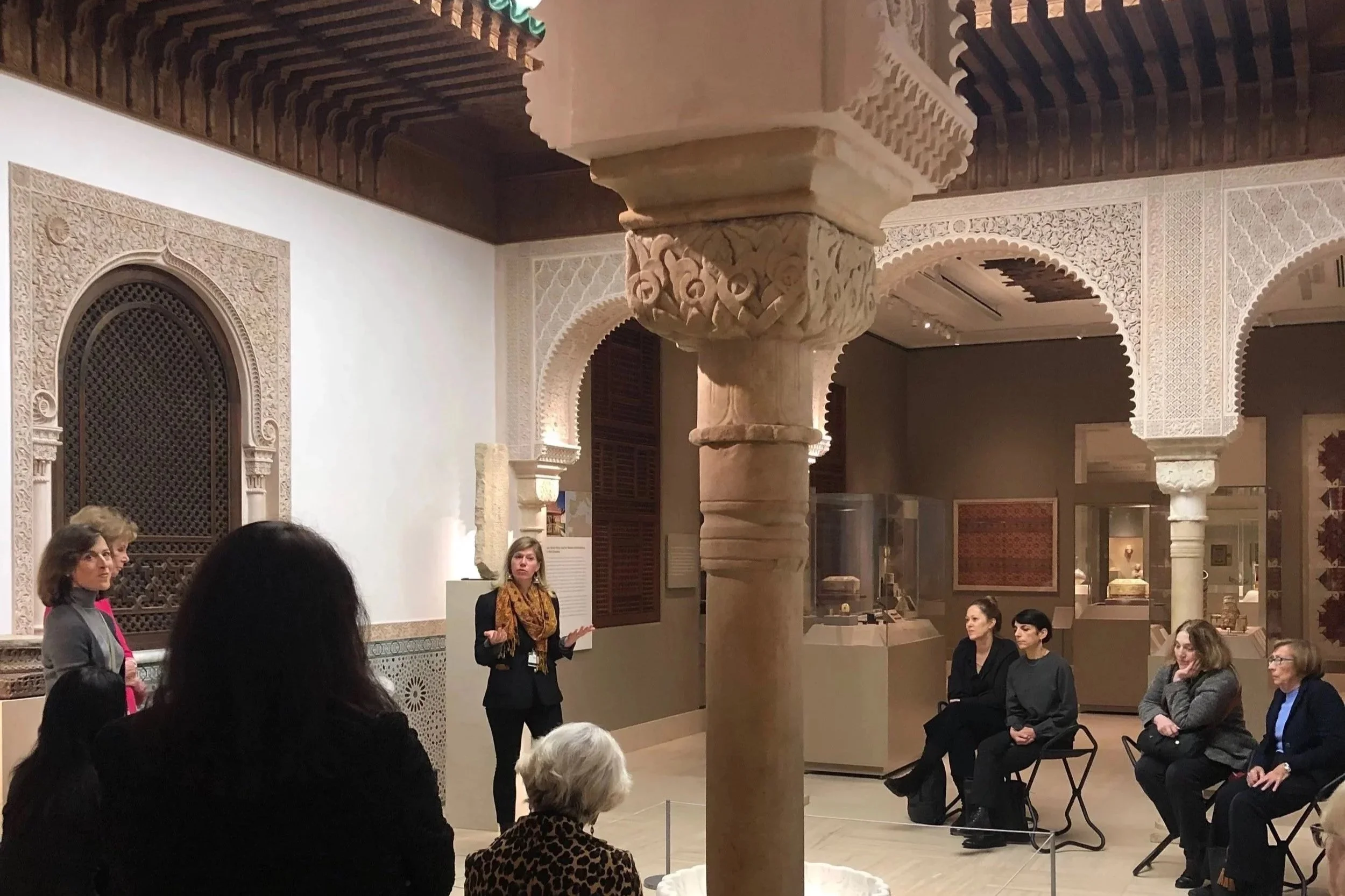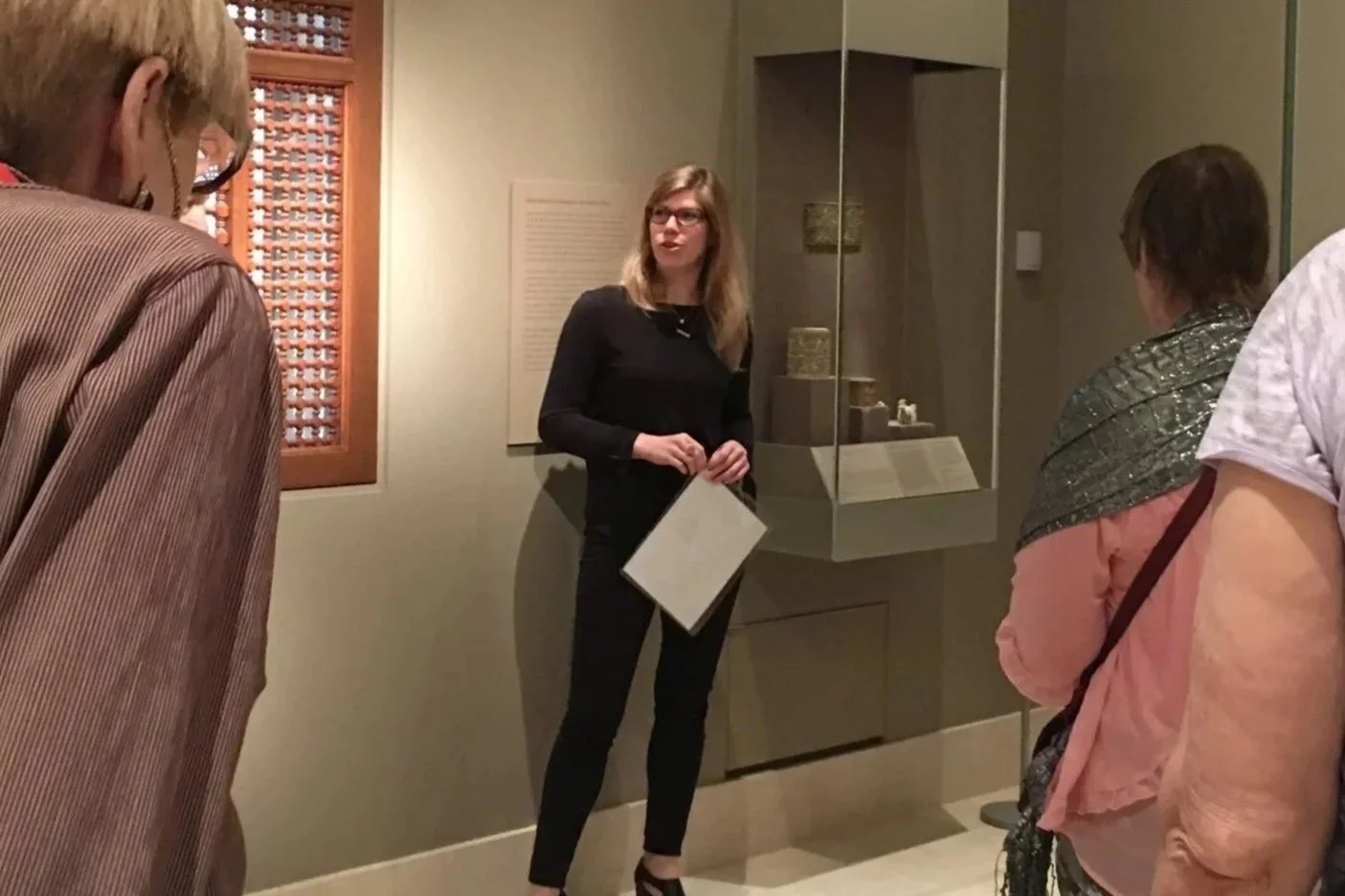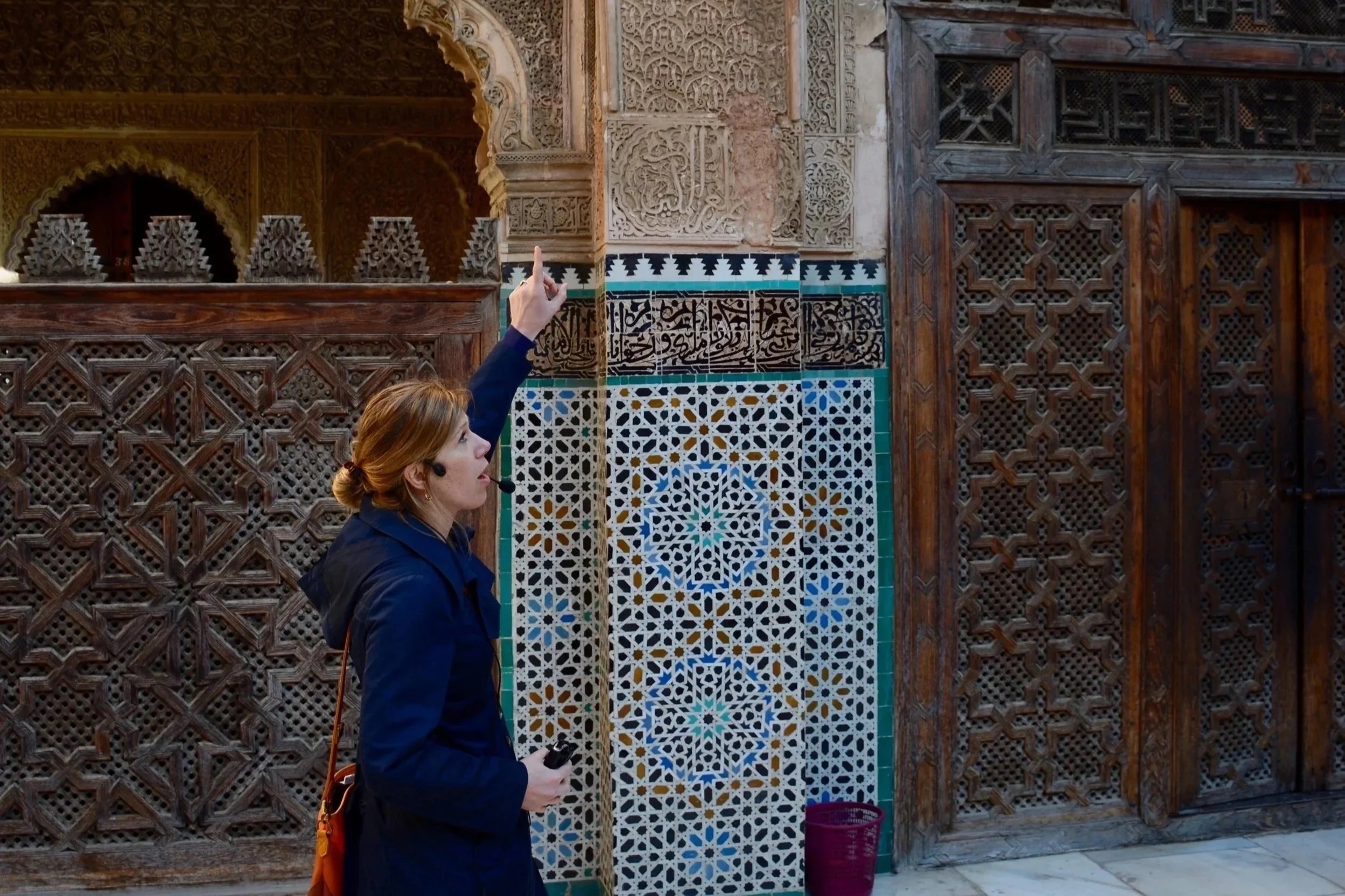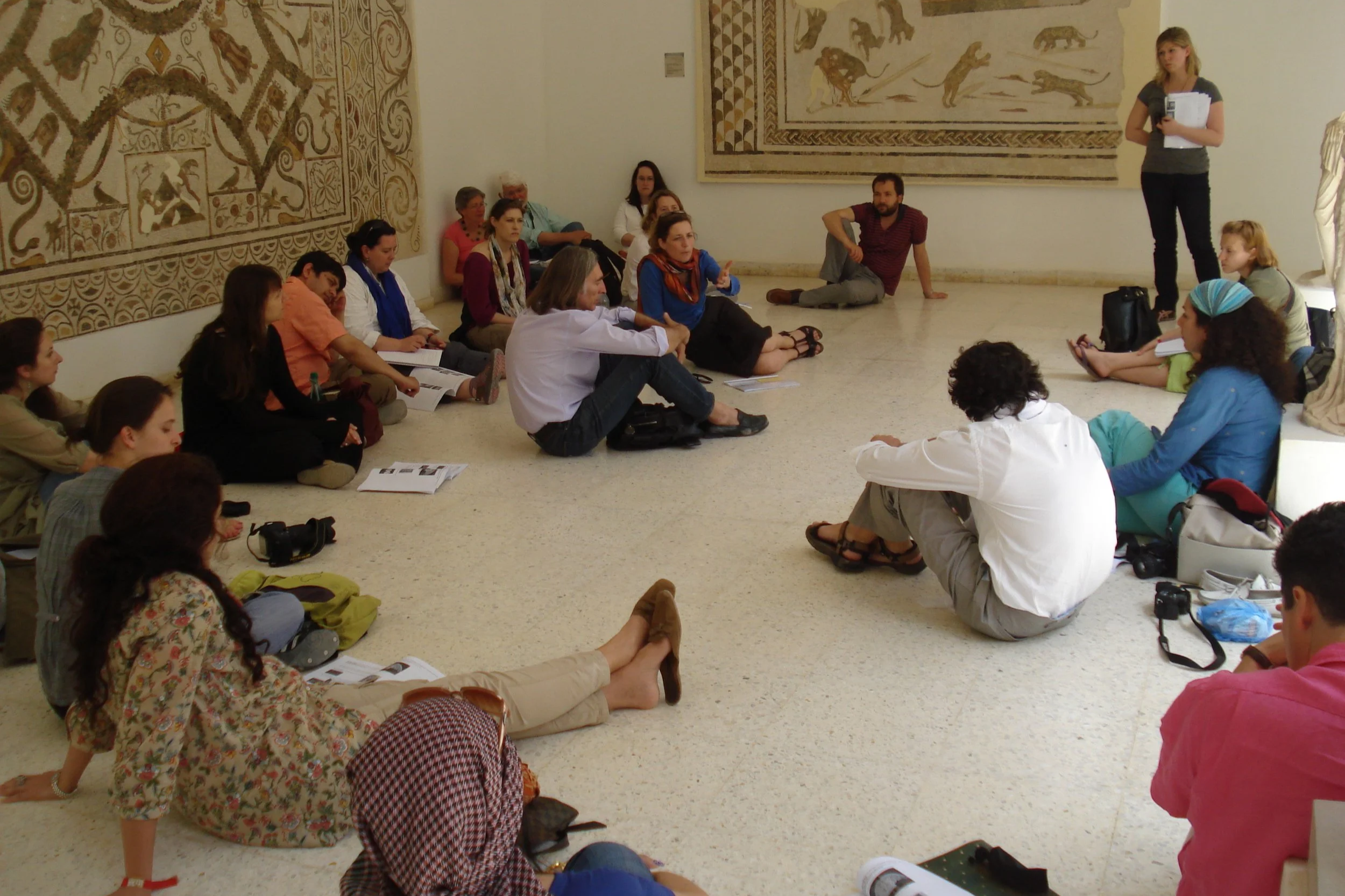



Upcoming:
History of the World Through Jewellery
This course will use jewelry as evidence to understand eras of global world history. Beginning with shell and bone jewels of the Neolithic period and ending with digital jewelry of the twenty-first century, our journey will trace major world events through the lens of jewelry fashion and production. We will explore how world events, technological innovation and trade networks informed the materials and appearance of jewelry from major empires across the globe. Visits to museums and galleries will complement the in-class lecture sessions
Offered at NYU Fall of 2025
Previous:
Islamic Arts in The Museum: Collection, Display, History
This course is an introduction to Islamic arts, archaeology and material culture. The field of Islamic Art extends from the emergence of Islam in the seventh century through to the present day. The primary focus will be on dynasties, geographies, and artworks, but we will also consider the history of collections and practices of display from the nineteenth to the twenty-first centuries. Class sessions will be held primarily at The Metropolitan Museum of Art, where students will gain an understanding of how exhibitions, rotations, and publications on Islamic art are produced, and how the curators collaborate with colleagues in design, conservation, education, and publications. While The Met will be our vantage point, we will also consider how other institutions across the globe in places like London, Paris, Dubai, Sharjah, Qatar and others have displayed Islamic Art in recent years. Field trips to the Brooklyn Museum and other New York City collections of Islamic Art will further add to our discussions of this material. Students will be evaluated on a series of in-gallery presentations on objects, as well as a final project conceptualizing an exhibition of Islamic Art in the form of museum panels, labels and other didactics.
Offered at Bard Graduate Center, Fall 2024
Museums and Islamic Art
This course will introduce the field of Islamic Art, and examine how collections of this material came to be exhibited in museums worldwide. How did colonial activity in the Middle East, India, and North Africa build the collections of the British Museum, the Louvre, the Victoria & Albert, the Rijksmuseum and other major institutions? In addition to an introduction to the calligraphy, textiles, ceramics, and works on paper from the Islamic world, we will discuss the historical collecting practices of such museums, as well as changes to these practices in the twenty-first century. Finally, we will look closely at the newly constructed museums in the Islamic world, designed by internationally renowned architects, including the Louvre Abu Dhabi, the Museum of Islamic Art Doha, the Islamic Art Museum Malaysia, and new projects in Saudi Arabia, among others.
Offered at NYU Fall of 2022
Islamic Jewelry Designs: From Cordoba to Cartier
To begin, we will look closely at the history of jewelry in the Islamic world, from the 7th to the 19th century, and examine how jewels and gemstones serve as talismans, symbols of power, as well as adornment. Then, we will look at how Islamic art and jewels served as inspiration for many of the most well-known jewelry houses of the 20th century, including Cartier, Boucheron, David Webb, Van Cleef & Arpels, and others.
Offered at NYU Fall 2021 Teaser Video
Art and Architecture of Morocco and Muslim Spain
Explore the art and architecture of Morocco, a land of desert and sea that has been formed by a fusion of Berber, Arab, Portuguese, French, Roman, and Spanish culture. Examine the architecture, ceramics, woodwork, textiles, jewelry, ivories, and manuscripts of the place Edith Wharton referred to as a “land of mists and mysteries.”
We will trace the history of Morocco chronologically from the native Berber culture through Phoenician, Roman, and Byzantine control, and look most closely at the Islamic period. Given the proximity to southern Spain, this course will also examine the art and architecture of the Islamic dynasties in neighboring Andalusia.
Offered at NYU, Spring 2021
Islamic Art and Architectural History
A visual journey into the riches of the arts of the Islamic world, a field that stretches from Andalusia in Spain across the Middle East and North Africa to Southeast Asia. This class explores sumptuous textiles, intricate wood and ivory carvings, painted ceramics in glossy glazes, metalwork inlaid with precious materials, enameled and gilded glass, and the painting and calligraphic traditions of the book arts.
We will tour the sacred mosques, monumental palaces, and lush gardens where such objects were used and treasured. Finally, the course will examine the continuity of these artistic traditions by looking at the work of contemporary artists from Islamic regions and their responses to political and social events of the 20th and 21st centuries.
Offered at NYU Summer 2021
Ancient and Islamic Jewelry
This course will trace the ancient traditions of bodily adornment in the near and middle east and north Africa, from the earliest bead jewelry of the Neolithic period through the opulent jewels of the Persian Shahs in the the 20th century. We will look most closely at the Ancient Egyptian and Mesopotamian jewels found in funerary contexts, and illustrate the continuity of these materials, forms and metalworking techniques through the medieval and modern periods in the Islamic World.
Offered at NYU Fall 2020
Art and Architecture of Muslim India
This course traces the history of Islam in India through the art and architecture of the Delhi Sultanates (1206–1526), the Mughal dynasty (1526–1858), and the Deccan Sultanates (1500–1700). Explore the majestic tombs, mosques, madrasas, forts, and palaces, as well as the lavish jewelry, textiles, jades, metalwork, and miniature painting, from the Muslim dynasties.
Special attention is given to the history of diamonds from Golconda, the source of the world’s diamonds until the 18th century, which were celebrated locally and traded to international markets.
(Archived course, offered at NYU in 2016.)